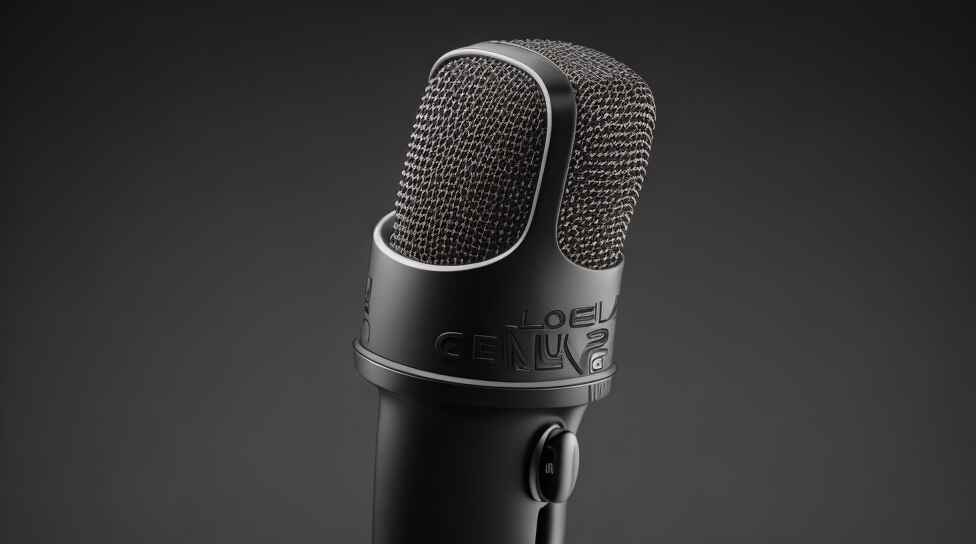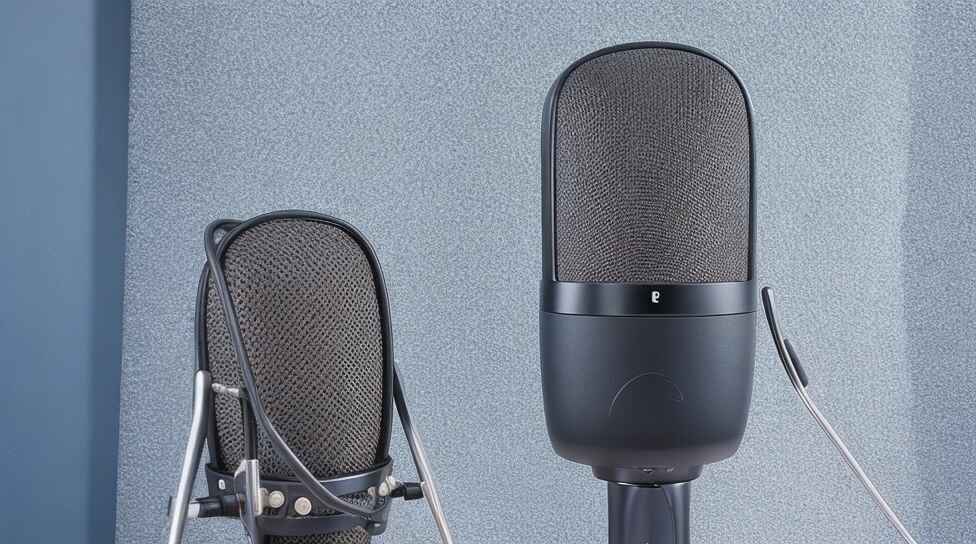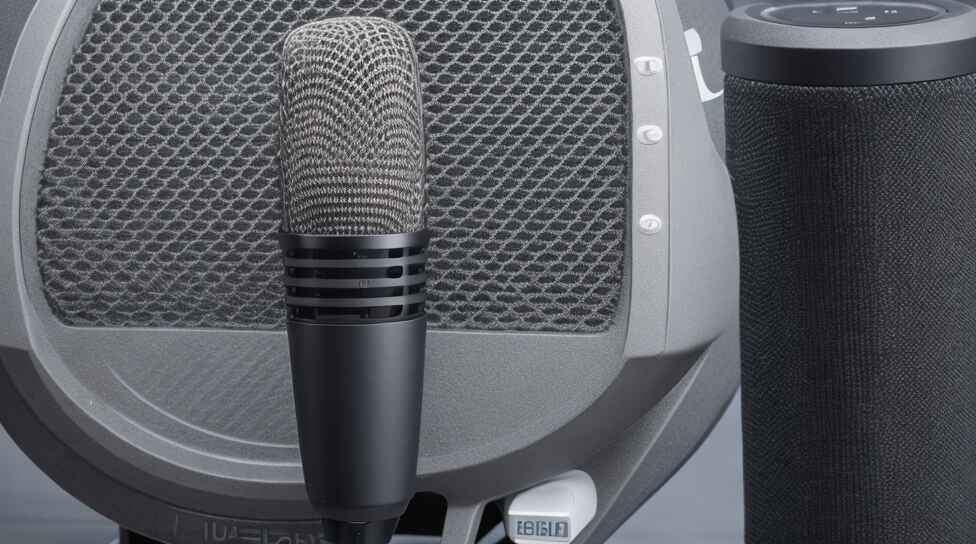Are your ears tired of crystal-clear audio quality? Do you long for the days of muffled voices and fuzzy soundscapes? Well, you’re in luck! In this article, we’re about to reveal the ultimate secrets of how to lower mic quality.
It’s time to embrace the delightful world of lo-fi audio, and we’ll show you just how to do it. So, why should you keep reading? Because sometimes, imperfection is music to your ears!
Why Lower Mic Quality?

Before we delve into the myriad scenarios where lowering mic quality can be beneficial, it’s crucial to understand why anyone would intentionally degrade the audio capture capabilities of their microphone.
Privacy Concerns
In an era where privacy is paramount, it might seem counterintuitive to intentionally compromise microphone quality.
However, there are situations where privacy concerns necessitate this.
For instance, in shared workspaces or crowded households, sensitive conversations can inadvertently get recorded by high-quality microphones.
By intentionally lowering the mic quality, you can reduce the chances of accidentally recording private discussions.
Reducing Background Noise
One of the most practical reasons for lowering mic quality is to combat background noise.
High-quality microphones pick up every sound detail, from the clatter of a keyboard to the hum of an air conditioner.
Lowering the mic quality can help mitigate these disturbances, making your audio content cleaner and more focused.
Creating a Specific Audio Effect
Audio enthusiasts and content creators often seek to achieve specific sound effects that require a less-than-ideal mic quality.
The crackling warmth of vintage recordings or the gritty charm of lo-fi music, for instance, can be emulated by intentionally degrading microphone quality.
It’s a deliberate artistic choice that adds character to audio productions.
Conserving Bandwidth
In an era of data consumption, where every megabyte counts, conserving bandwidth is a sensible goal.
Lowering mic quality reduces the size of audio files, making them easier and quicker to transmit.
This can be particularly advantageous in situations where internet connectivity is limited or costly.
Emulating a Vintage or Lo-Fi Sound
Perhaps the most fascinating reason for intentionally lowering mic quality is the quest for nostalgia.
Musicians and producers often aim to recreate the vintage or lo-fi sound of bygone eras.
Lowering the mic quality is like a time machine, transporting listeners back to the golden age of analog recordings with all their quirks and imperfections.
How to Lower Mic Quality

Now that we understand the reasons for intentionally lowering mic quality, let’s dive deeper into the techniques and methods that can help you achieve this unique audio effect:
Adjusting Microphone Settings
One of the most straightforward methods to lower mic quality is by adjusting the settings on your microphone.
Most modern microphones come with settings for different polar patterns, gain, and sensitivity. Experimenting with these settings can yield interesting results.
Lowering the sensitivity, for instance, can make your microphone less responsive to quieter sounds, introducing a noticeable drop in audio quality.
Bitrate and Sample Rate Adjustments
Digital audio quality is heavily influenced by the bitrate and sample rate settings. Lowering these parameters can significantly degrade the audio quality.
For instance, reducing the sample rate from 44.1 kHz (CD quality) to 8 kHz (telephone quality) can introduce a distinct lo-fi character to your recordings, mimicking the sound of vintage devices.
Using a Low-Quality Microphone
Sometimes, the simplest solution is the most effective. Using a low-quality microphone intentionally can produce the desired effect of reduced mic quality.
These microphones often lack the sensitivity and precision of high-end models, resulting in a more distorted and grainy sound.
Gain valuable knowledge on Pawn Shops Buy Microphones through my article: Do Pawn Shops Buy Microphones? Cash for Sound
Using Software Filters and Effects
In the digital age, software offers a plethora of tools for manipulating audio quality. Utilizing filters and effects can help you lower mic quality in various ways:
Equalization
Applying heavy equalization can alter the frequency response of your microphone, emphasizing certain frequencies while suppressing others.
This can create a tinny or muffled sound, reminiscent of older recording equipment.
Noise Reduction
Paradoxically, adding noise reduction can reduce mic quality.
By aggressively suppressing background noise, you can unintentionally distort the primary audio source, resulting in a less clear and more processed sound.
Explore my articles to delve deeper into Mic Violin Live: How to Mic Violin Live? Techniques for Crystal Clear Sound
Adding Distortion or Compression
Intentionally introducing distortion or compression to your recordings can lend a raw and gritty quality to your audio.
This technique is popular among musicians seeking a vintage rock or punk sound.
Modifying the Recording Environment
The environment in which you record can also influence mic quality:
Reducing Ambient Noise
Creating a controlled recording environment with minimal background noise can make your microphone work harder to capture sound.
This can lead to a lower signal-to-noise ratio and a noticeable drop in audio quality.
Adding Physical Barriers or Dampening Materials
Strategically placing physical barriers or sound-dampening materials in your recording space can alter the acoustics, contributing to a less pristine audio quality.
This is particularly useful for emulating the sound of confined spaces or retro recording studios.
Intentional Interference
Sometimes, embracing interference can lower mic quality in a distinctive way:
Creating Static or Interference Intentionally
By introducing static or interference intentionally, you can replicate the sound of old radios or damaged audio equipment.
This method requires precision, as too much interference can render the audio unintelligible.
Mimicking Phone Call Quality
To achieve the distinct sound of a phone call, you can simulate the limitations of telecommunication systems.
This includes emulating the narrow bandwidth, compression artifacts, and occasional dropouts associated with phone calls.
Lowering Mic Quality for Specific Scenarios

Now that we’ve explored the various methods to lower mic quality, let’s delve into specific scenarios where this practice is particularly useful and how to go about it effectively:
Lowering Mic Quality for Privacy
Using Encryption or Secure Communication Tools
In situations where privacy is paramount, such as confidential business meetings or sensitive discussions, it’s crucial to maintain secure communication.
Use encrypted communication tools and platforms that not only provide privacy but also often employ compression algorithms that inherently lower mic quality.
These tools ensure that your conversations remain confidential while achieving the desired effect.
Disabling Advanced Microphone Features
Modern microphones often come equipped with advanced features like noise cancellation and echo reduction.
To intentionally lower mic quality for privacy purposes, disable these features.
This can introduce some background noise and reduce the clarity of your audio, making it less intelligible to eavesdroppers.
Achieving a Lo-Fi or Vintage Sound
Using Specific Software Effects or Filters
To capture the nostalgic warmth of a lo-fi or vintage sound, you’ll want to use specific software effects and filters:
Adjusting EQ Settings
Experiment with equalization settings to emphasize lower frequencies and dampen the high-end.
This can mimic the characteristics of older recording equipment that had limited frequency response.
Reducing the overall clarity by rolling off the highs can also contribute to a vintage vibe.
Reducing Mic Quality for Bandwidth Conservation
In scenarios where conserving bandwidth is crucial, such as online gaming or remote work, lowering mic quality can be a game-changer:
Lowering the Bitrate of Audio Streams
Most communication tools and platforms allow you to adjust the bitrate of audio streams.
Lowering the bitrate means compressing the audio data, resulting in reduced mic quality but improved performance in bandwidth-constrained situations.
Experiment with different bitrates to find the right balance between audio quality and bandwidth conservation.
Using Compressed Audio Formats
Another effective way to conserve bandwidth while lowering mic quality is by using compressed audio formats.
Formats like Opus or Speex are designed for efficient compression, making them ideal for scenarios where bandwidth is limited.
These formats sacrifice some audio quality in favor of reduced data transmission, ensuring smooth communication even in challenging network conditions.
Maintaining Audio Clarity
While intentionally lowering mic quality can serve various purposes, it’s crucial to emphasize that sacrificing audio clarity completely should be avoided in most cases.
Clear communication remains a fundamental goal in audio production and communication.
Here, we’ll discuss the importance of finding a balance between lowering mic quality and maintaining clear audio, along with some valuable tips and best practices.
Striking a Balance
Lowering mic quality doesn’t have to mean sacrificing audio clarity entirely. It’s essential to strike a balance that aligns with your objectives.
Here are some tips for finding that equilibrium:
1. Define Your Objectives
Before diving into mic quality adjustments, clearly define your goals.
Are you aiming for a vintage sound, enhancing privacy, or conserving bandwidth?
Understanding your purpose will help you determine how much you can lower mic quality while still achieving your desired outcome.
2. Gradual Adjustments
Avoid making drastic changes to mic settings or audio processing.
Gradual adjustments allow you to monitor the impact on audio quality and make necessary tweaks without compromising clarity entirely.
3. Monitor Audio Output
Continuously monitor the audio output during recording or communication. Pay attention to the clarity of speech or sound.
If it becomes unintelligible, it’s a sign that you’ve gone too far in lowering mic quality. Make real-time adjustments to regain clarity.
4. Get Feedback
Seek feedback from others involved in the project or conversation.
They can provide valuable insights into the audio quality from an external perspective.
If they struggle to understand or hear clearly, consider adjusting mic settings accordingly.
Tips and Best Practices
When intentionally lowering mic quality, whether for creative purposes or practical reasons, follow these tips and best practices to do so effectively and safely:
1. Always Backup Original Recordings
Before implementing mic quality adjustments, ensure you have a backup of the original recordings.
This precaution allows you to revert to the unaltered audio if necessary. It’s a safety net that can save you from irreversible loss of important content.
2. Experiment and Test Settings Before Recording
Experimentation is key to finding the right balance between lowering mic quality and maintaining clarity.
Test various settings and effects in a controlled environment before your actual recording or communication session.
This way, you can refine your approach without risking the quality of your final product.
3. Use Reputable Software and Tools
When employing software filters, effects, or compression techniques, rely on reputable and trusted software and tools.
This reduces the risk of unintended consequences or potential security issues associated with low-quality software.
4. Keep Privacy Concerns in Mind
If you’re lowering mic quality for privacy reasons, consider the implications of your actions carefully.
Ensure that privacy remains a top priority, and never compromise it in the pursuit of lower mic quality.
Use encryption and secure communication channels when applicable to maintain confidentiality.
FAQs About How to Lower Mic Quality
Why can’t I change my mic quality?
If you’re unable to change your mic quality, it could be due to several reasons. First, check if your microphone drivers are up to date.
Additionally, ensure that the software or application you’re using allows mic quality adjustments.
If the issue persists, consider troubleshooting hardware connections and settings.
Why is my mic so high?
If your microphone volume is too high, it might result from incorrect settings or a sensitive mic.
To fix this, adjust the microphone input level in your operating system’s audio settings or within the application you’re using.
You can also physically move the microphone further away from your mouth to reduce volume.
How do I make my mic sound bad on OBS?
To intentionally degrade your mic quality on OBS, reduce the bitrate or sample rate in your audio settings.
You can also add audio filters like noise, distortion, or reverb to achieve the desired “bad” sound effect. Experiment with these settings to achieve the desired outcome.
How do I make my mic sound deeper?
To make your microphone sound deeper, you can use equalization (EQ) in your recording or streaming software.
Lower the frequencies in the mid-range and boost the lower frequencies to create a deeper voice effect. Experiment with EQ settings until you achieve the desired depth.
How do I change my mic sensitivity?
To adjust your microphone sensitivity, go to your operating system’s audio settings or the application you’re using.
Look for the microphone sensitivity or gain control and adjust it lower for less sensitivity or higher for more sensitivity. Fine-tune this setting until it suits your needs.
How do I fix my mic overload?
Mic overload, or distortion, can occur when the input level is too high. To fix it, lower the microphone input level in your system settings or application.
Additionally, use a pop filter to minimize plosive sounds, which can contribute to distortion during recording or streaming.
Why does my mic pick up so much audio?
Excessive background noise in your microphone may be due to a high sensitivity setting.
Adjust your microphone’s sensitivity or gain control to reduce unwanted noise. Consider using noise reduction filters in your recording or streaming software to further improve audio quality.
Why is my mic so loud on PC?
A loud microphone on your PC can be caused by high sensitivity or gain settings.
Go to your PC’s audio settings or the application you’re using and lower the microphone input level.
Ensure that no background applications are boosting your microphone volume unintentionally.
What level should my microphone be at?
The ideal microphone level depends on your specific setup and preferences.
Generally, aim for a microphone level that allows your voice to be clear and audible without peaking or distorting.
Experiment with different levels and monitor your audio to find the optimal setting for your needs.
Final Thoughts About How to Lower Mic Quality
In the realm of audio, the art of intentionally lowering mic quality is a versatile tool, offering creative possibilities and practical solutions.
It allows us to evoke nostalgia, protect privacy, conserve bandwidth, and achieve unique soundscapes.
However, it’s vital to tread carefully, striking a balance that prevents the complete sacrifice of audio clarity. Experimentation, monitoring, and feedback are essential in this pursuit.
Always prioritize clear communication while harnessing the intriguing potential of lower mic quality.
Whether you’re a musician seeking a vintage vibe or safeguarding confidential conversations, this practice can enhance your audio repertoire when applied thoughtfully.
